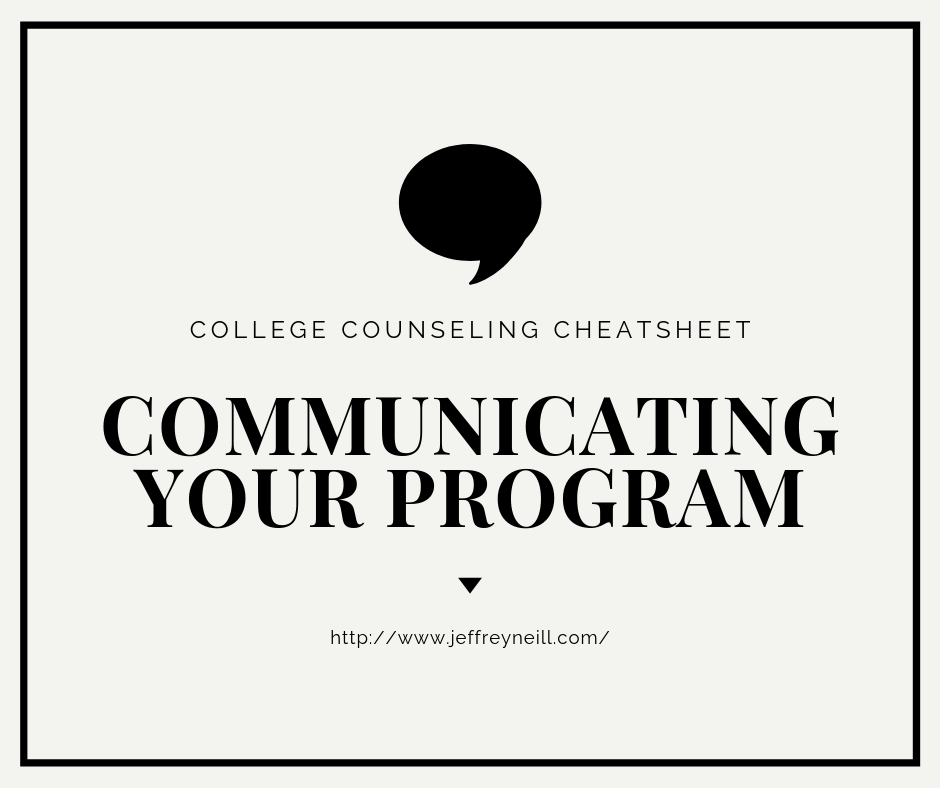What do you need to communicate to whom on a monthly basis?
This is simple enough of a question, but as I work with counselors from across the globe, I am struck by how fundamental the routine return to this question must be. The work of a college counselor requires an enormous amount of planning, of course, but implementation hinges on successfully communicating that planning and programming regularly. Once the planning is done, how do you convey and share what needs to be done on a regular basis to ensure that the primary goal of awareness is being pursued?
There is an enormous amount of philosophy that must go into this component of the work. If it has not been considered previously, how much “hand-holding” you intend (or are expected) to do must be addressed. In this way, the intentionality of your program and philosophy must be taken into account. For example, do you work with freshmen (and/or sophomores)? If not, why not? If so, why? In either case, when and how do you communicate your stance on this matter to the students, their parents, your supervision, etc?
So, as you formulate your communication consider the following groups and sub-groups, keeping in mind that this is not a complete list and that there may be other constituencies or sub-groups that may require your attention:
Students
Seniors
Juniors
Sophomores
Freshmen
Middle-Schoolers
Lower-Schoolers (elementary)
Parents & Guardians
Faculty
Teachers writing letters of recommendation
Teachers teaching juniors/seniors
Administration & School Leadership
Working groups
Ad hoc committees
Trustees or School Board
Your Community
Local companies, groups, CBOs, etc.
Other college counselors, college offices, etc.
Colleges & Universities
College reps who might visit your campus
College reps who have visited
Alumni
Once it has been determined to whom your program must be communicated, it must also be considered which manner of communication would be best. Often there are parameters put in place by your school. For example, I have worked at schools where all communications to parents needed to be issued by the Communications Office in a weekly newsletter (ostensibly to minimize the number of individual messages a parent might receive and therefore, arguably, to increase the likelihood of their reading what was sent). These considerations aside, take the time to consider what medium would be best for each group. There is a digital divide at work where, for example, parents might respond better to email while students might respond better to Instagram. Will you choose one standard mode of communication (e.g. email) and ask for all parties to conform to your platform? Or will you diversify your communications to accommodate all consistencies?
Finally, how will you measure whether your communication plan is effective? For example, attendance at an event does not necessarily indicate successful communication as lack of attendance could be a function of scheduling conflicts or a plain lack of interest. So what metrics would you use to assess and evaluate your plan? Keep in mind that many communication platforms (from Facebook to mass emailing software to websites/blogs) can track open rates and click-through rates.
In the end, having a communication plan saves time, so considering putting one together!

